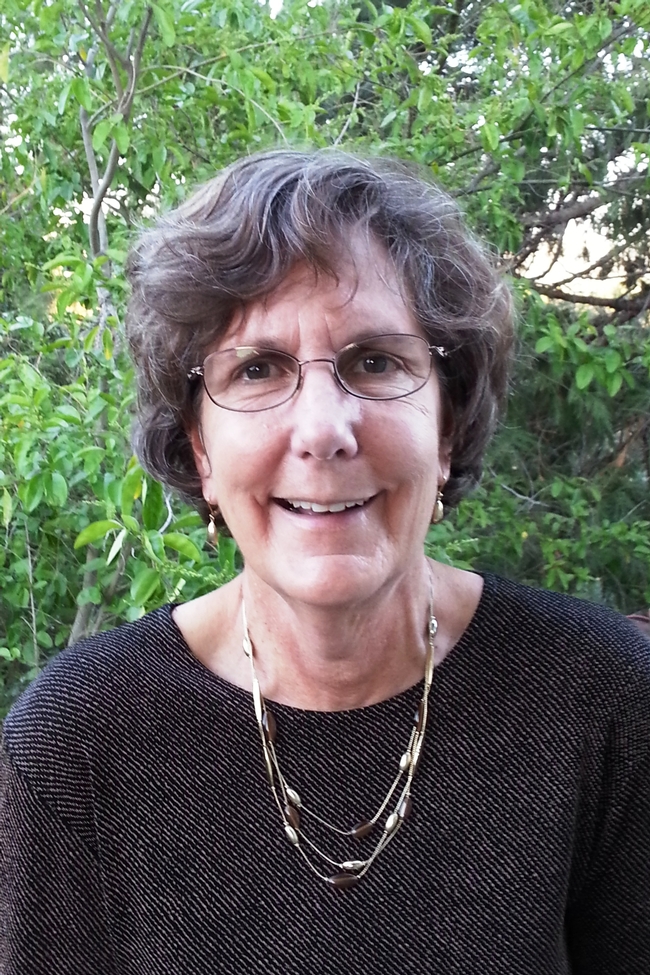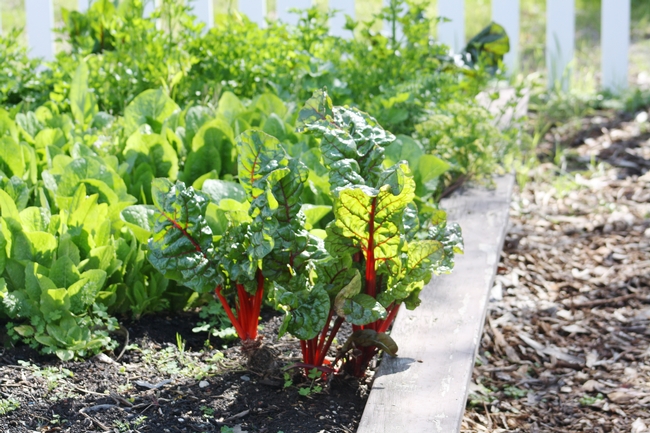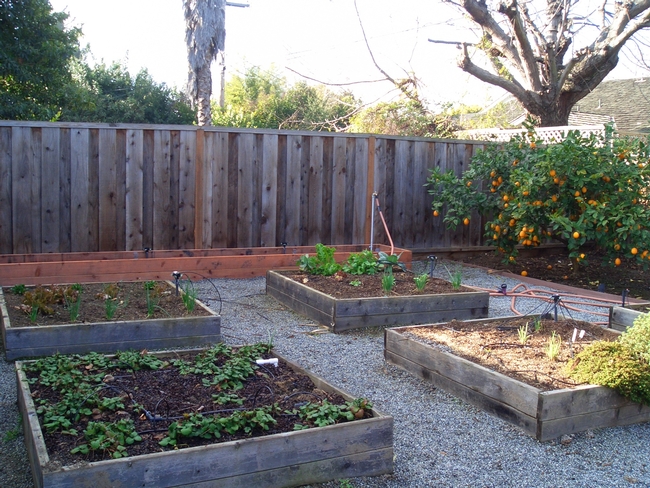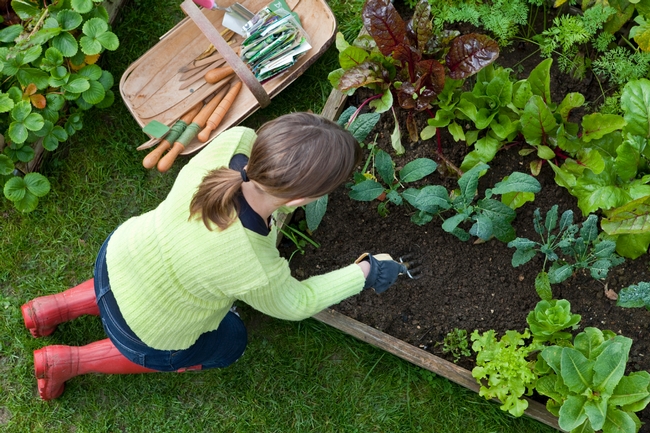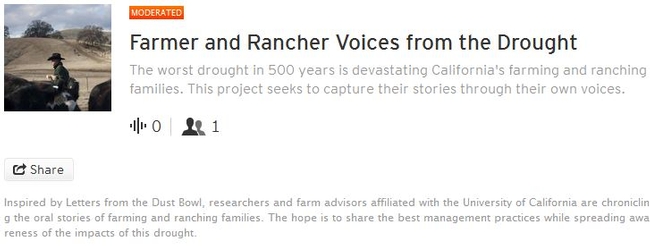Posts Tagged: UCCE
Cooperative Extension's Mary Bianchi receives agricultural sustainability leadership award
The Agricultural Sustainability Institute (ASI) at UC Davis announced today that Mary Bianchi of the University of California's Division of Agriculture and Natural Resources is this year's recipient of ASI's Eric Bradford and Charlie Rominger Agricultural Sustainability Leadership Award.
The annual award will be presented to Bianchi tomorrow, April 15, at a ceremony featuring distinguished speaker LaDonna Redmond.
The Bradford-Rominger award recognizes and honors individuals who exhibit the leadership, work ethic and integrity epitomized by the late Eric Bradford, a livestock geneticist who gave 50 years of service to UC Davis, and the late Charlie Rominger, a fifth-generation Yolo County farmer and land preservationist.
Bianchi has worked for UC Cooperative Extension for 20 years, currently serving as Farm Advisor and County Director for San Luis Obispo and northern Santa Barbara counties. Among her achievements include the development and implementation of a water quality workshop series that required collaboration of over 100 team members and brought timely and essential information on water quality management to 2,200 growers in California.
Bianchi is quick to share her success. “I've had partners in all the efforts that I've undertaken who just wanted to find a way to get information out to people so that they can make their own decision. Sometimes that means staying within the lines, and sometimes that means stretching and taking some risks and being willing to push the envelope. Growers, industry, agencies and universities have stepped up to find a way to make our efforts work.”
Eric Bradford and Charlie Rominger are remembered for their abilities to approach major agricultural challenges with grace, honesty, and a commitment to collaboration across disciplines and interests.
Sonja Brodt, Academic Coordinator at ASI says Bianchi “does not hesitate to address the critical needs of her clientele, even if they require extending herself into new subject areas. She is down-to-earth and creates the space in collaborations for each party's concerns to be heard and valued in the process to reach viable solutions.”
Bianchi's own work ethic reflects those qualities. “I think that you do create change one person at a time by listening to what they have to say and respecting the fact that they are bringing their own successes and constraints and baggage that you don't know about,” says Bianchi.
“Eric and Charlie were a lot the same way,” she continues. “If you see that there's a need, you just find a way to make it work. And you find the people that are willing to do that with you and it happens.”
Learn more about the award on the Agricultural Sustainability Institute's web site.
After the Bradford-Rominger award is presented to Bianchi at tomorrow's ceremony, distinguished speaker LaDonna Redmond will speak on “Food + Justice = Democracy.” Redmond is a food justice activist who was inspired to fight for a fairer food system after facing limited access to healthy, organic food in her Chicago community. To facilitate her community's food access, she launched an initiative converting vacant lots into urban farms.
She is founder of the Campaign for Food Justice Now, an organization focused on social justice within the food system, creating community-based solutions and engaged advocacy.
Eric Bradford and Charlie Rominger Agricultural Sustainability Leadership Award Ceremony
5:00 p.m., Wednesday, April 15
Buehler Alumni and Visitors Center
UC Davis campus
This event is free and open to the public. Students are encouraged to attend.
Ten tips for vegetable gardening during a drought
Is it possible to grow a vegetable garden when water resources are scarce and water rationing could be imposed? Water responsibly, plant carefully, and select fruit and vegetable varieties that are drought tolerant. All of these sustainable gardening practices require less water – and help ensure your family has access to a variety of nutrient rich foods.
Ten simple drought tips to reduce water use in your backyard garden
- Planting time
Plant earlier in spring and later in fall. Planting earlier in the spring season takes advantage of the warm weather and reduces exposure to high mid-summer temperatures. Planting later in the fall minimizes the use of supplemental water and takes advantage of seasonal rains to establish plants. For example, tomatoes and other nightshade crops such as peppers and eggplants, should not be planted until soil temperatures reach 55 degrees. With a warm spring this could be as early as mid-April. Remember to always use a soil thermometer for accurate soil temperature readings.
- Mulch, mulch, mulch!
A 3- to 4-inch layer of mulch can reduce watering needs by as much as 50 percent. Mulch reduces water evaporation and keeps soil temperatures down during hot summer months. Grass clippings, dried leaves, pine needles, straw and shredded bark are all examples of natural mulches which can be used to cover the soil. Hay is not recommended because it contains seeds, which yields weeds and can become a problematic option.
- Enclosed spaces
Gardens planted in enclosed spaces, for example a raised garden bed, retain water better than gardens planted in open soil. Plant seeds and transplants in a hexagonal "off-set" pattern rather than in straight rows. A hexagonal arrangement groups plants closer together, which provides shade from leaves, keeping soil cool and water from evaporating. - Companion planting
Companion planting is the practice of grouping crops together for mutual benefit. The Native American “three sisters” approach of planting corn, beans and squash together are the perfect example of companion planting. Tall cornstalks provide a structural support for the climbing beans, the beans return nitrogen back into the soil, and the squash spreads across the soil acting as a mulch and keeping the soil cool. - Watering times
The best time to water your garden is in the late evening and early morning hours, typically between 9 p.m. and 6 a.m. The cooler morning temperature and limited wind reduced water evaporation rates. - Water efficiently
Overhead watering with a sprinkler system is not as efficient as drip irrigation. Compared to overhead sprinklers - drip systems can reduce water usage by up to half. Install a drip irrigation system, grouping plants with similar water needs together on one drip irrigation line. Drip irrigation systems are relatively easy to install for most do-it-yourself homeowners. The UC Division of Agriculture and Natural Resources book Drip Irrigation in the Home Landscape is a great reference on the materials, design and installation of a drip system.
- Control Weeds!
Pesky weeds compete for valuable water, sunshine and soil nutrients in your garden. Remove weeds before they have an opportunity to flower or spread. Visit the UC Integrated Pest Management website for tips on controlling weeds to identify recommendations for specific weed species. - Drought Resistant Crops
Purchase varieties of fruits and vegetable that do well in hot and dry climates. Many heirloom varieties from Mediterranean regions are prized for being drought tolerant. Smaller varieties bred for containers often produce a more bountiful yield per plant than standard varieties. Avoid water hogs! Some favorite water-efficient edibles from UCCE Master Gardeners include: asparagus, chard, eggplant, mustard greens, peppers, roma tomatoes, and California native strawberries. Check with a local UCCE Master Gardener Program about which varieties are recommended for your zone. - Peak water times
Fruit and vegetables have critical periods for increased water demands. For most plants once they become established watering times and amounts can be reduced until the flowering or fruit setting process begins. An increased amount of water should be reintroduced during this time. After this initial period of fruit set water can slowly be reduced again. In some cases, reducing water can improve the flavors of your harvest (think, dry-farmed tomatoes)! - Garden size
Determine the amount of fruits and vegetables needed to feed your family, does your family have two, four, or eight members? If you overproduced and wasted crops last year - decrease the amount of plants this year. Set up a garden exchange in your neighborhood so everyone grows less but still has a great variety!
The University of California Master Gardener Program extends to the public free UC research-based information about home horticulture and pest management. In exchange for the training and materials received from the University of California, Master Gardeners perform volunteer services in a myriad of venues. If you are interested in becoming a certified UC Master Gardener contact your local UC Cooperative Extension office.
UC team launches 'Voices from the Drought'
Water sloshes from a fill hole atop the steel tank and strikes the dirt road in puffs of dust. With weathered hands, short nails and a once black felt cowboy hat, Adam Cline motors the water truck through the anxious herd. Piled on the floor beside him are several 40 pound bags of soybean meal, a more affordable protein supplement that protects the herd from malnourishment. Cline is fortunate: his cautious management strategies over the last two years will likely carry this operation through yet another drought year, without having to sell off any cows.
“Every rancher is equipped for an average drought,” he tells me. “But a drought like this is really hard to manage for… Emotionally it's like a battle every day to try to figure out how you can afford to feed your cows, how you're going to get water to them.”
Letters from the Dust Bowl
With as little as a quarter of the average rain in 2013, the drought in this region has now entered its third year, breaking records on a regular basis. And it may be the worst here in 500 years. Many of the University of California researchers and farm advisors helping the state's agriculture industry prepare for the coming dry summer months are comparing the water shortage to the historic Dust Bowl of the 1930s, when many Oklahoma farmers and ranchers left their homes in hopes of a better life in California. In her "Letters from the Dust Bowl," Caroline Henderson captured the voices of agriculture's most difficult era in America.
In honor of Henderson's work, a team of UC researchers is developing a project that will use digital tools to capture the voices of the farming and ranching families who are today battling the worst drought they have witnessed. On one front, the project, called Farmer and Rancher Voices from the Drought, is cultivating a following through a new Facebook group. Later print and multimedia stories will be added to a UC Davis drought page.
Today, however, we are launching a new audio component, where farmers and ranchers are interviewed and recorded by a friend, colleague or loved one. They document their stories of the drought, explaining what practices have worked for them so that others dealing with these struggles can better cope. Through the broad 100-year Cooperative Extension effort at the University of California, faculty, staff and researchers are reaching out to the extensive network of farming and ranching families across the state, encouraging each of them to share their stories.
How the 'Voices' project works
The audio component of the project is hosted on SoundCloud, where anyone can easily record and upload an audio track to share. Our team is moderating the SoundCloud group and approving each recording. The tracks will be shared across our social media and web pages, where they will hopefully gain the attention of media, as well as the general public.
Here are a few guidelines to smooth the process:
- Create an account. Recording is easy, but first you must go to the SoundCloud site and sign up. You can also download and record with their smart phone app.
- Research your strategy. StoryCorps, a nonprofit project, has an excellent instruction guide for helping you record your interview. While you're there, we encourage you to also upload your finished story to the StoryCorps DIY page, where it will be preserved at the Library of Congress.
- Keep it short. By limiting your recording to three minutes, your story will keep listeners interested while maintaining its most essential parts.
- Frame your conversation around questions. Have your interviewer select from this list and add follow-ups:
- Provide your name, what you do and some background information on your farming or ranching operation.
- How has your operation been affected by the drought?
- What have been your management practices in response?
- What will you do differently if it continues?
- Is this the worst drought year you've experienced?
- What are your stocking and supplemental feed rates? Or how much land is planted versus fallow? Explain.
- What will your operation look like next year if the drought continues?
- How has this affected you and your family?
- What advice would you give others in similar situations?
- What should those outside California know about this drought?
- Finally, name it. Once you have successfully loaded your conversation onto our SoundCloud group, let us know more about yourself. Send us your feedback and some details so we can follow up: an email address or phone number, the storyteller's name, the interviewer's name, the company name (if you're affiliated with an agricultural organization) and a photo.
'P' Is for Pollinators
It's good to see the growing number of seminars, lectures and workshops on pollinators.The more we know about our pollinators, the better we'll be...
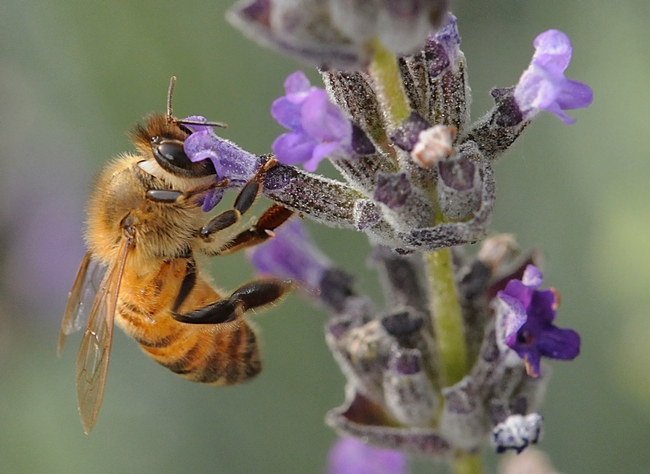
Honey bee foraging on lavender. (Photo by Kathy Keatley Garvey)
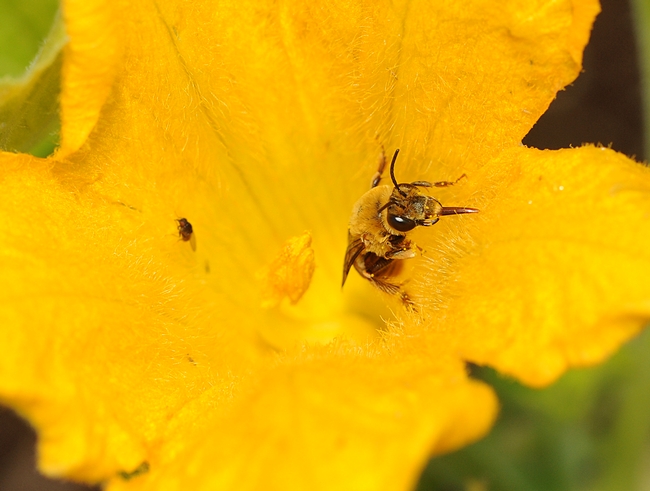
Squash bee (genus Peponapis) on squash. (Photo by Kathy Keatley Garvey)
More coverage on potential clustering of CE in foothills
Following up on the Stockton Record story about UC Cooperative Extension discussions of restructuring in the Mother Lode counties, the Sonora-based Union Democrat did a follow-up story.In the Aug. 6 Union Democrat, Michael Kay writes: "Possible changes include reducing the number of county directors by putting one person in charge of multiple counties and cutting office space for all but the most active local programs."
"However, talks are preliminary," Klingborg is quoted. "Only one meeting has been held with representatives from the Mother Lode, so no particular cuts have been identified."
Calaveras County’s extension office took a 17.5 percent cut for the current fiscal year, like the rest of county departments. It will receive $167,453, according to the article.


